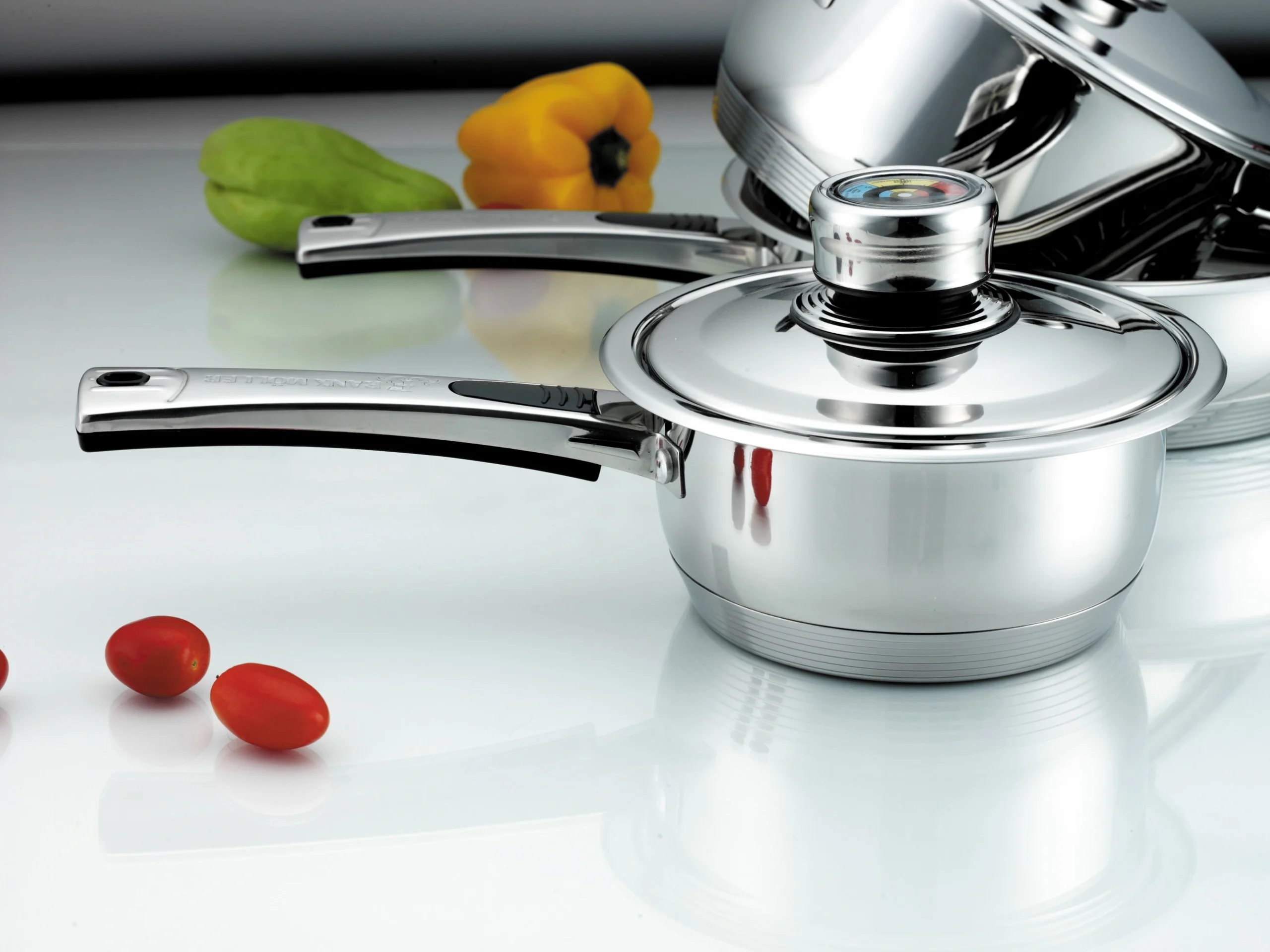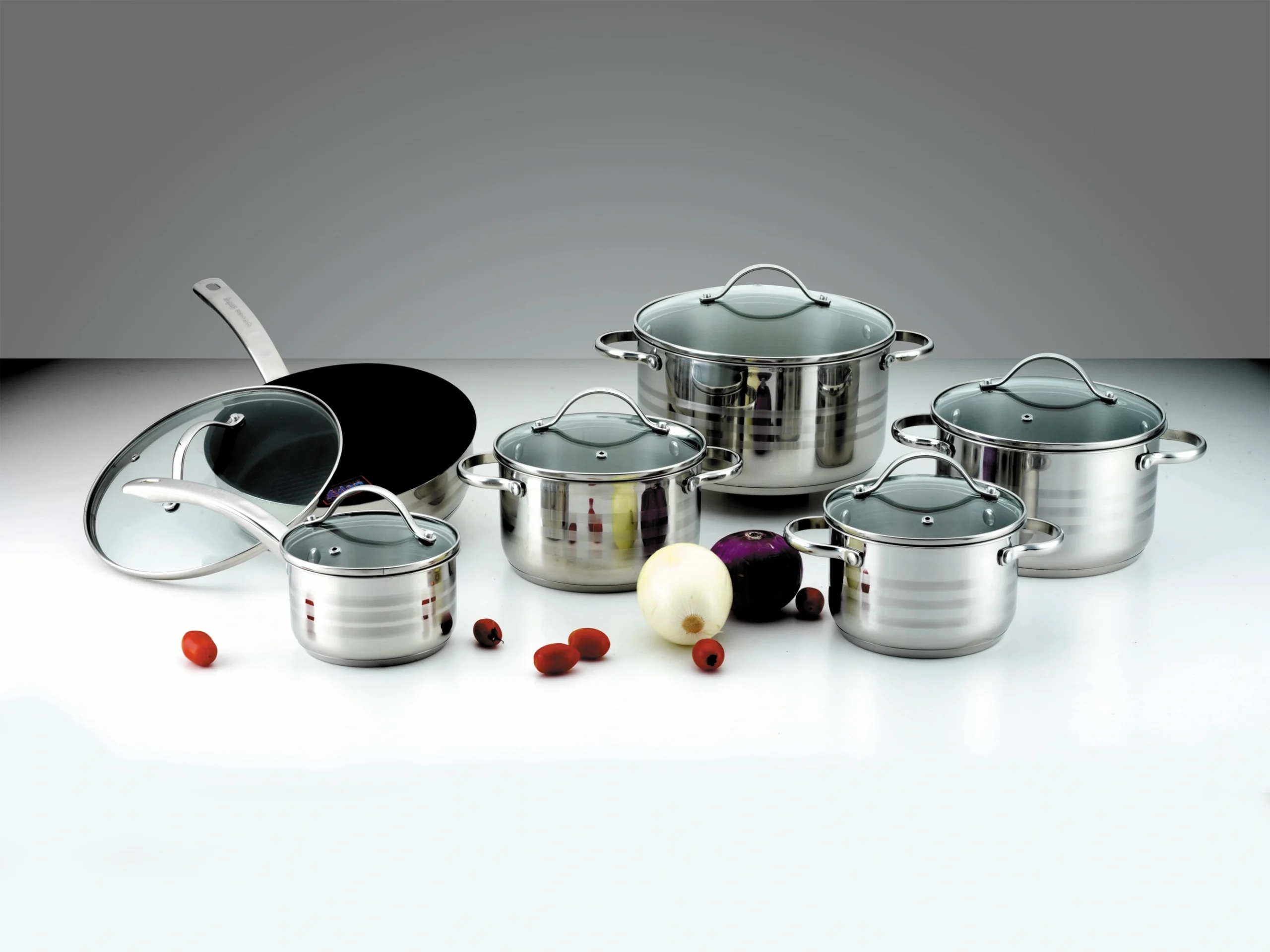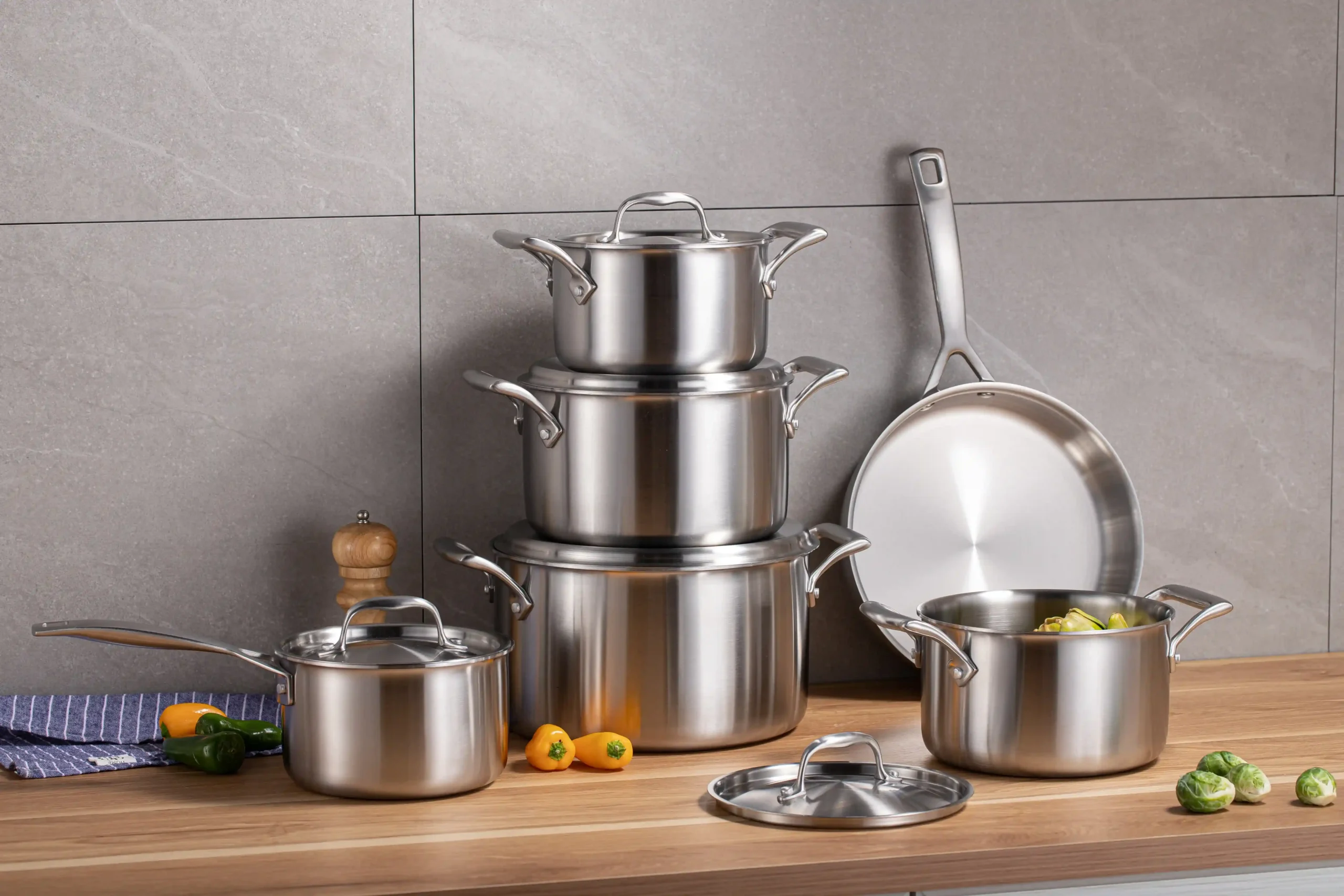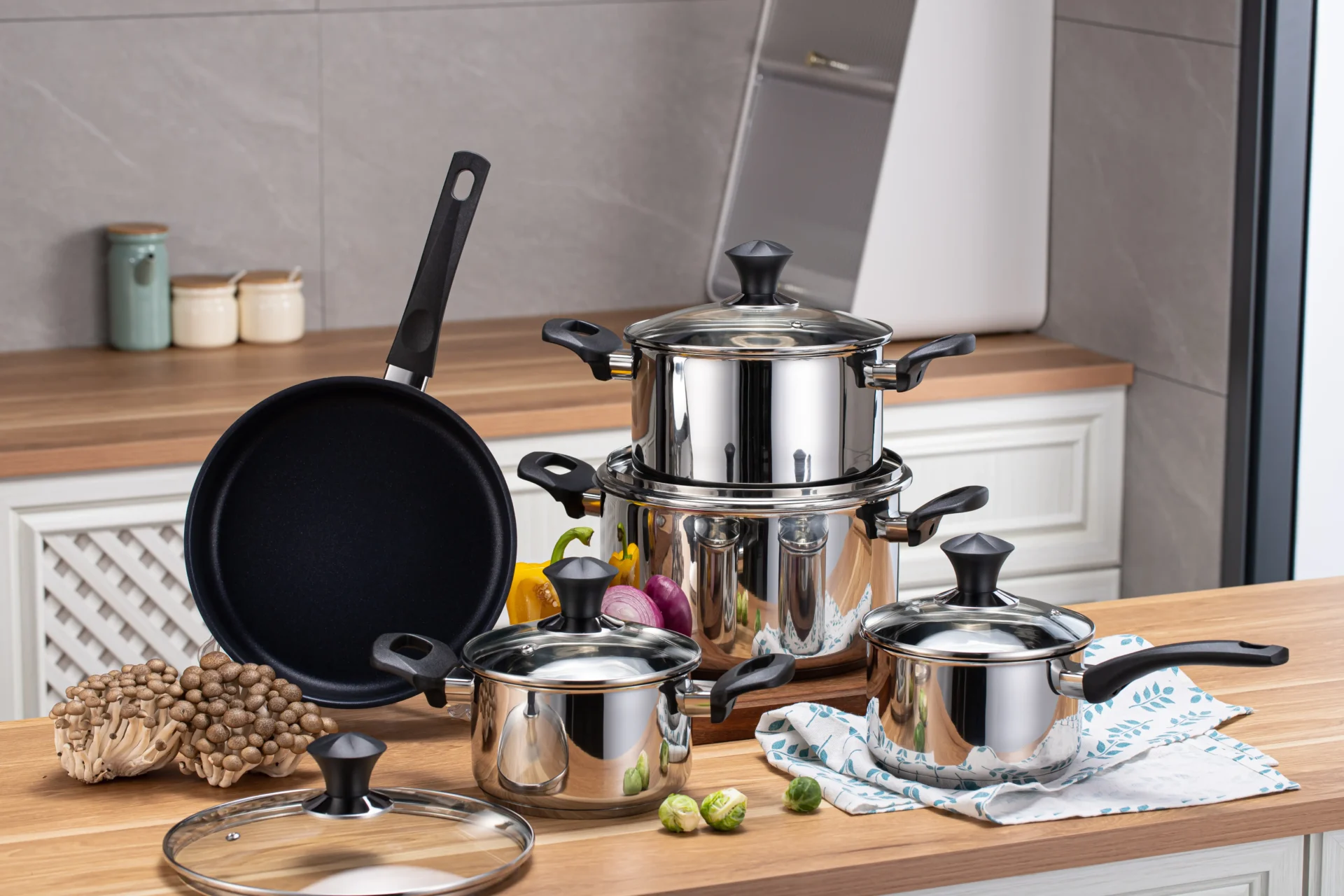
304 stainless steel pans are celebrated as durable, safe staples in kitchen cookware collections—whether you’re using a stainless saucepan for simmering soups or a safest frypan for searing meats. But to unlock their full potential and avoid common mistakes, first-time users need to master proper seasoning, preheating, and usage taboos. Below is a step-by-step guide to help you care for your 304 stainless steel pan, ensuring it serves your kitchen for years.
1. Pre-Use Prep: Clean the Pan Thoroughly First
Before seasoning or cooking, always clean your new 304 stainless steel pan—factory residues (like protective oils or dust) can affect flavor and performance.
1.1 Simple Cleaning Steps
Rinse the pan with warm water, then add a few drops of mild dish soap. Use a soft sponge (avoid steel wool, which scratches the surface) to gently scrub the interior and exterior. Rinse thoroughly and dry with a clean towel to prevent water spots. This step applies to all 304 stainless steel pieces, from a small stainless saucepan to a large safest frypan—it’s the foundation of safe, hygienic cooking.
2. Proper Seasoning: Build a Natural Non-Stick Layer
Seasoning isn’t just for cast iron—304 stainless steel pans also benefit from a light seasoning to reduce sticking and enhance durability.
2.1 Step-by-Step Seasoning for 304 Stainless Steel Pans
- Preheat Gently: Place the pan on low heat and let it warm for 1-2 minutes. Avoid high heat immediately, as sudden temperature changes can warp the pan.
- Add a Thin Layer of Oil: Pour 1-2 teaspoons of neutral oil (like vegetable or canola oil) into the pan. Swirl the oil to coat the entire interior, including the sides—this creates a protective barrier.
- Heat Until Smoke Points: Turn the heat to medium and let the oil heat until it shimmers (but doesn’t smoke excessively). For a stainless saucepan, tilt it slightly to ensure oil coats the bottom and lower sides; for a safest frypan, focus on covering the flat cooking surface.
- Cool and Wipe: Turn off the heat and let the pan cool completely. Use a paper towel to wipe away excess oil—your pan now has a subtle non-stick layer that improves with each use.
2.2 Why Seasoning Matters for 304 Stainless Steel
Unlike non-stick pans with chemical coatings, 304 stainless steel’s seasoned layer is natural and safe. It prevents food (like eggs or fish) from sticking, makes cleaning easier, and reduces the risk of discoloration—keeping your kitchen cookware looking new.
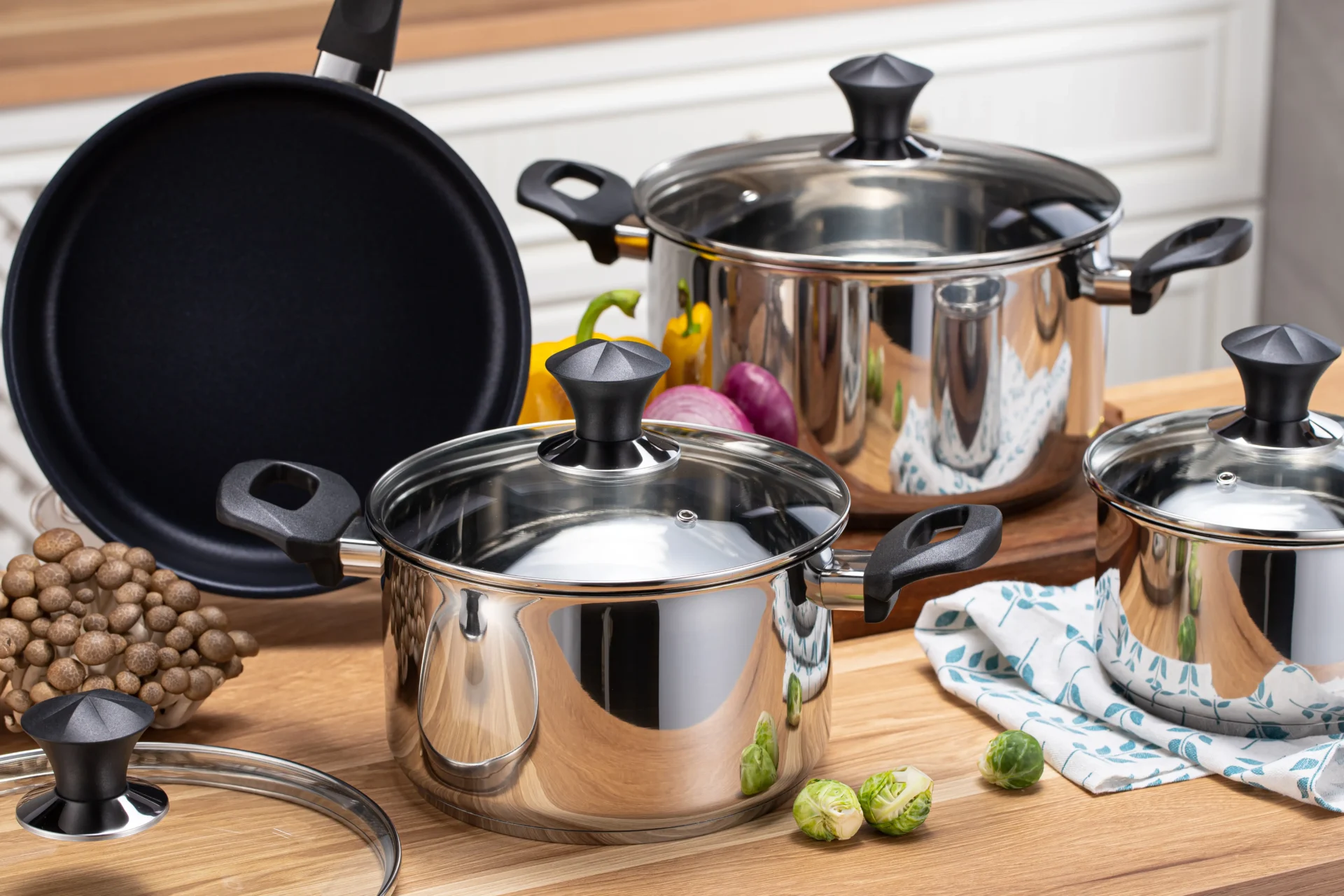
3. Correct Preheating: Avoid Hot Spots & Burning
Preheating is critical for even cooking, but 304 stainless steel pans require a different approach than other kitchen cookware (e.g., aluminum).
3.1 How to Preheat a 304 Stainless Steel Pan
- Start with Low Heat: Place the pan on the stovetop and turn to low heat. Let it warm for 2-3 minutes—this allows the entire pan (not just the bottom) to heat evenly.
- Test the Temperature: Sprinkle a few drops of water into the pan. If the water beads up and rolls around, the pan is ready. If the water evaporates immediately, the pan is too hot; if it sits flat, it’s not warm enough.
- Adjust for Pan Type: For a stainless saucepan used for boiling water or simmering, preheat on low for 1 minute before adding liquid. For a safest frypan used for frying, preheat a little longer (3-4 minutes) to ensure the surface is uniformly hot—this prevents food from sticking.
3.2 Mistakes to Avoid When Preheating
Never preheat an empty 304 stainless steel pan on high heat for more than 5 minutes. Overheating can cause the pan to discolor (develop rainbow hues) or warp, and it may also damage the seasoning layer you built earlier.
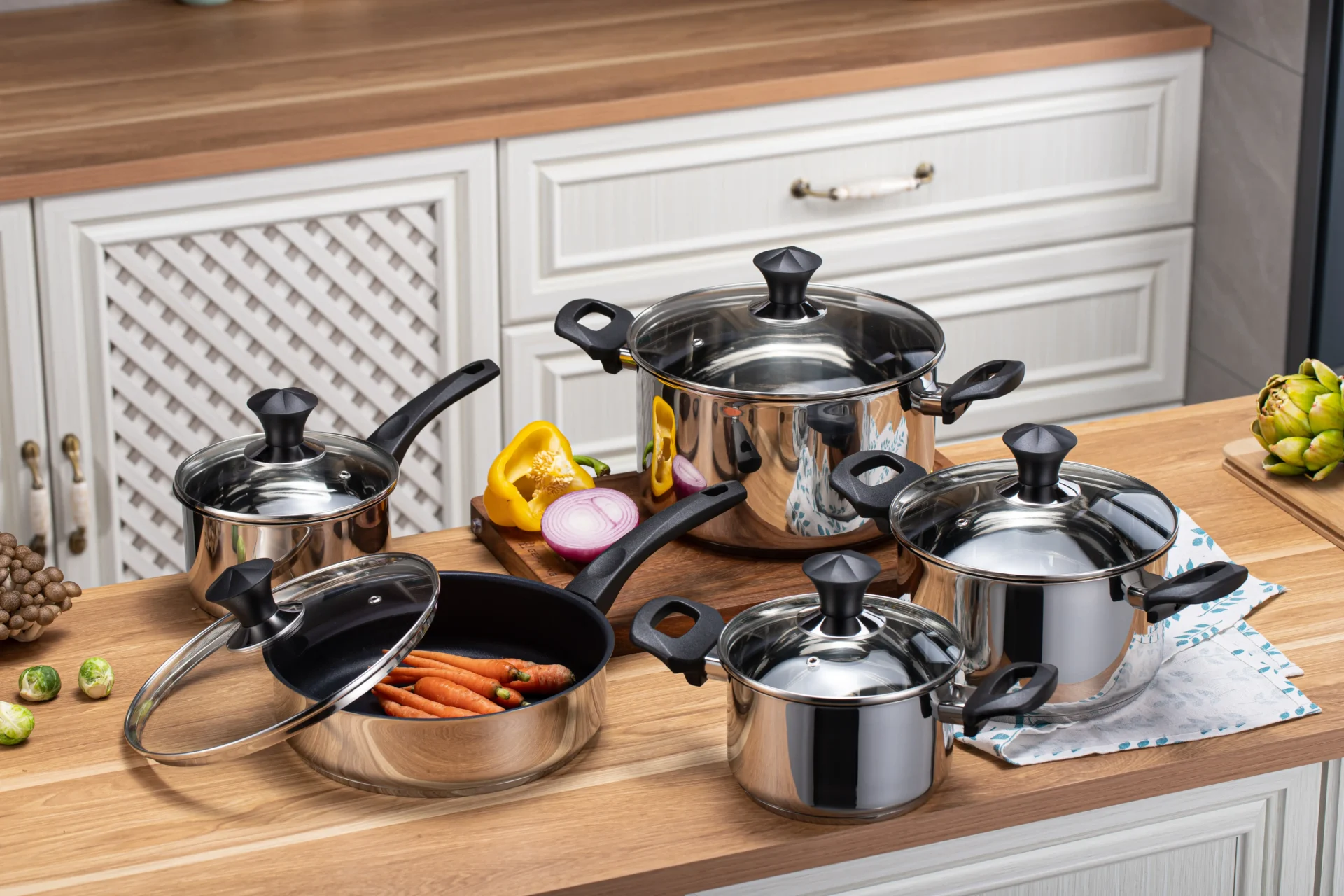
4. Usage Taboos: Protect Your 304 Stainless Steel Pan
Even with proper seasoning and preheating, certain habits can shorten the life of your 304 stainless steel pan. Here are key taboos to remember:
4.1 Don’t Use Abrasive Tools
Avoid steel wool, scouring pads, or sharp metal utensils (like uncoated spatulas) on the pan’s interior. These can scratch the surface, exposing the metal to food residues and increasing the risk of sticking. Opt for silicone, wooden, or nylon utensils instead—they’re gentle on the pan and safe for all kitchen cookware.
4.2 Don’t Cool the Pan Too Quickly
After cooking, never rinse a hot 304 stainless steel pan with cold water. Sudden temperature changes (hot pan + cold water) can cause the pan to warp or develop cracks. Let the pan cool to room temperature first, then clean it—this applies to both stainless saucepan and safest frypan models.
4.3 Don’t Leave Food in the Pan Overnight
Acidic or salty foods (like tomato sauce, lemon juice, or soy sauce) can corrode the 304 stainless steel surface if left in the pan for hours. After cooking, transfer leftovers to a storage container and clean the pan promptly. This prevents discoloration and maintains the pan’s food-safe properties.
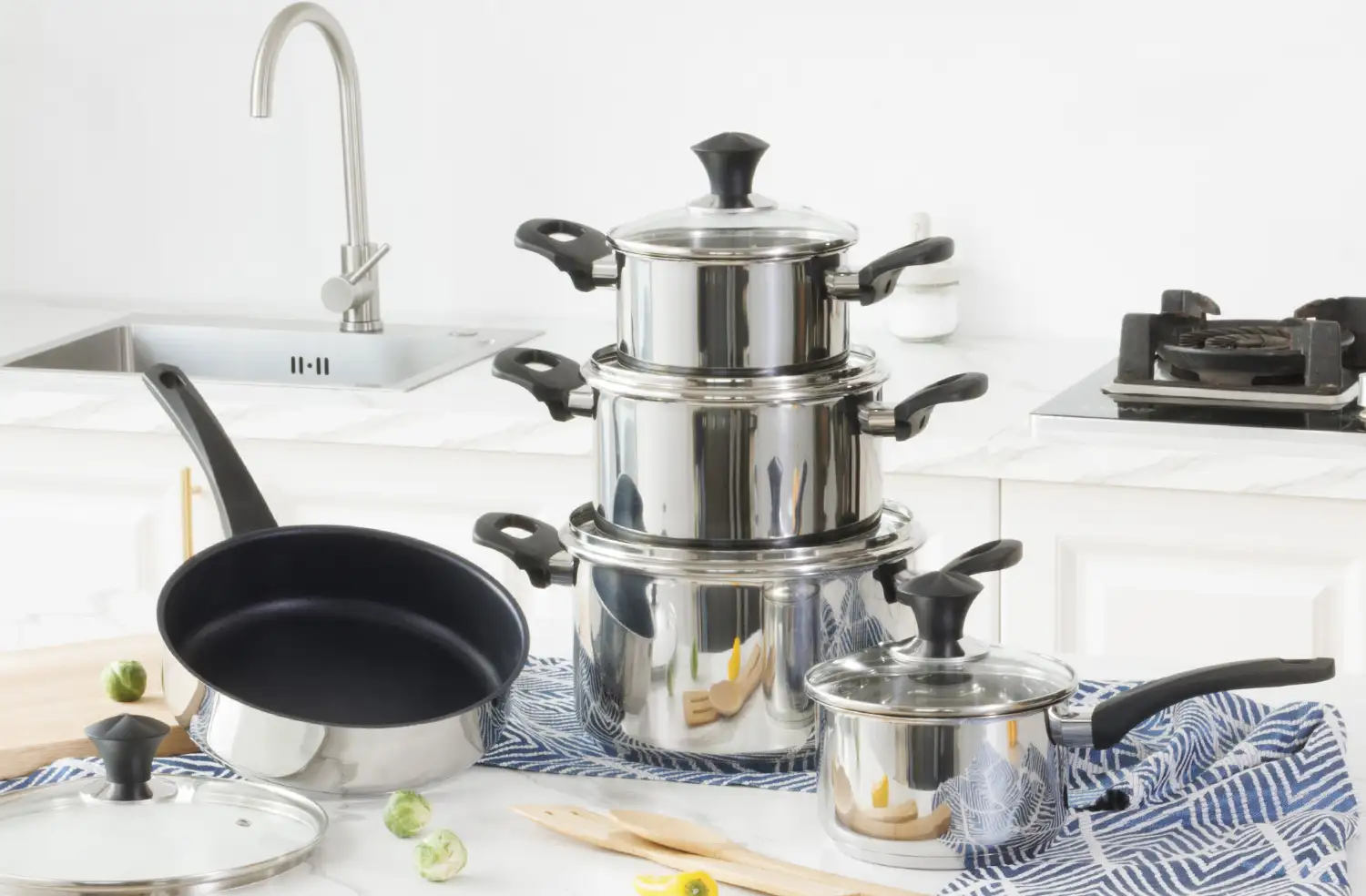
5. Post-Cooking Care: Keep Your Pan in Top Shape
Proper cleaning and storage after use are just as important as pre-use prep.
5.1 How to Clean a Used 304 Stainless Steel Pan
If food sticks to the pan, fill it with warm water and a splash of vinegar, then simmer for 5 minutes—this loosens residues. Use a soft sponge and mild soap to clean, then dry immediately. For stubborn stains (like burnt food), make a paste of baking soda and water, gently scrub, and rinse—this won’t scratch the surface.
5.2 Store Your Pan Properly
Store 304 stainless steel pans in a dry, cool cabinet. If stacking pans, place a soft cloth or paper towel between them to prevent scratches. For a stainless saucepan, hang it by its handle (if possible) to save space and avoid pressure on the 锅底. For a safest frypan, stack it with lighter pans on top to prevent warping.
6. Conclusion
Using a 304 stainless steel pan for the first time doesn’t have to be intimidating. By following proper pre-use cleaning, seasoning, and preheating steps—and avoiding common taboos—you’ll turn this essential piece of kitchen cookware into a reliable companion. Whether you’re cooking with a stainless saucepan or a safest frypan, these tips will help you enjoy even cooking, easy cleaning, and long-lasting durability. Remember: good care today means your 304 stainless steel pan will serve your family’s meals for years to come.

